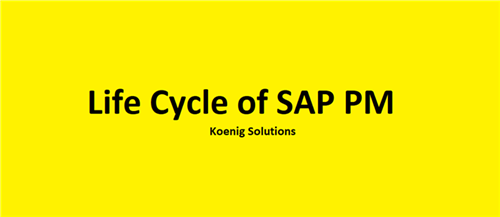![Top 35+ VMware Interview Questions and Answers [Updated 2023] VMware Interview Questions and Answers 2023](https://rms.koenig-solutions.com/Sync_data/CCE_Logo//2859-Anewwaytoplay.(31)(1).pngL.jpg)
VMware is a leading multinational company offering various cloud computing solutions. It has a global presence and reputation, sought after by the best of candidates for its esteemed working environments. A VMware career will undoubtedly be rewarding for your career goals. But clearing the VMware interview is not easy to do.
Therefore, to help with your preparation, here are 30 extensively formulated VMware interview questions and answers to help you crack the big interview.
Top VMware Interview Questions and Answers 2022 - 2023:
Q1. What is a Virtual Machine? What do you understand by Virtualisation?
Ans. A virtual machine (VM) is a computer resource that, similar to a physical computer, contains a CPU, memory, disks, etc. However, it only consists of software and exists as code. The process of creating such a VM is called virtualization.
Using a VM, businesses can run multiple OS on a single computer. This helps in utilising multiple computer resources efficiently, testing separate operating systems while saving physical space and costs.
Q2. Describe different types of Virtualization and respective software that can be used for them.
Ans. Find the different types of Virtualization and respective software
-
Server Virtualisation: This refers to when one physical server is used to run several virtual machines. The software vSphere facilitates this.
-
Application Virtualisation: it is used so that several computers can run excerpts of an application while it is hosted on a single server. VMware Thin App can be used for this process.
-
Desktop Virtualisation: Using this, multiple OS can be deployed via a single VM. The result is that the need for individual CPUs is eliminated. VMware Horizon View is often used for this purpose.
-
Storage Virtualisation: The storage of several individual devices can be pooled together to create a simplified and shared storage space through virtualization. The software vSAN can be used to expedite this process.
Also Read: A Complete Guide To VMware Certified Professional (VCP)
Q3. What do you know about Hypervisors? Give its types and uses.
Ans. A Hypervisor is software that facilitates and abstracts the working of a VM environment by effectively managing resources. It allocates memory, shares processing power, and enables multiple VMs to run on a single computer.
There are two types of Hypervisor-
-
Type-1: Native or Bare Metal Hypervisor, has direct access to physical hardware.
-
Type 2: Hosted Hypervisor, as the name suggests, runs on an operating system.
Q4. What are Fault tolerance and FT logging traffic?
Ans. Fault tolerance is a VMware system that guarantees continuous access to applications, avoids split-brain to occur, and enables zero downtime and zero data loss in case the ESX server fails.
FT logging traffic is a port setting in VMKernel that is used to move irresolute events from primary VMs to secondary VMs.
Q5. Explain VMware DRS!
Ans. A Distributed Resource Scheduler(DRS) is used for effectively distributing resources in the VMware environment. It makes use of Clusters and VMware HA to manage resources dynamically. Moreover, it gives the end-user the facility to change rules governing the deployment of various VM resources.
Q6. What do you know about ESXI?
Ans. Elastic Sky X Integrated(ESXi) is a type-1 hypervisor made by VMware that installs directly into the physical computer and manages VM resources increasing efficiency and reliability by portioning hardware and applications.
Q7. What is a Port Group?
Ans. A Port group is a collection of ports that increases security and better manages traffic policy rules by providing a pivotal point for virtual machines to connect. It can be used to assign respective VLANs to traffic.
Q8. What is the Promiscuous Mode? Give its significance.
Ans. It is a state of the VM environment that is used to better monitor network traffic. It can use all available network data packets. It can be set to a particular port group in VSphere ESXi. When it is set to accept, all the communication can be seen by all the virtual machines.
Q9. State the importance of VMKernel.
Ans. VMkernel is an interface that runs directly on the ESXi host between VMs and the system’s hardware. It is important because it schedules CPUs, allocates proper memory, and provides an abstraction for other OS.
Q10. State the applications of vMotion.
Ans. Find the State the applications of vMotion:
-
Helps in creating a dynamic, self-optimising data centre.
-
Facilitates the software and hardware requirements between cloud provider and user.
-
Is used to migrate VMs from one host to another.
Q11. What do you know about PSC?
Ans. Platform Services Controller (PSCs) is the latest function of VMware, introduced in version 6, used to handle sign-on, licensing, server reservation, and other security functions related to infrastructure. It can be installed in embedded and/or external ways.
Q12. What are the uses of vSAN?
Ans. vSAN is an approach used to create shared storage among VMs as it pools together the storage of ESXi hosts and divides them among different virtual machines. It can be used for both flash-based and magnetic disk storage.
Q13. Explain in detail about the Content Library.
Ans. The content library is a virtual space that stores VM templates, scripts, etc., and shares them between different geographical locations.
It enables consistency, efficiency, and security.
There are three types of content libraries: Local, published and subscribed. Each of them has a storage size of up to 64TB and a limit of 256 items.
Q14. Are you aware of the vCloud Suite?
Ans. vCloud Suite is an amalgamation of several VMware components and features in a single package. It includes the processes and software for virtualisation, disaster recovery, application management, etc.
Q15. What are Availability and Storage in the vCloud Suite?
Ans. Storage and availability in the vCloud Computing Suite are made up of the following:
-
Storage DRS: Its load and place balance VMs depending on input/output latency and storage capacity.
-
Storage vMotion: vMotion uses non-disruptive, proactive storage migration and reduces VM storage I/O bottlenecks. It also frees up storage capacity.
-
Application HA: HA achieves high availability earmarked for particular apps.
Data Protection: This deploys recovery and backup protocols based on EMC Avamar.
Q16. What is Host Isolation in VMware High Availability (HA):
Ans. VMware HA (high availability) has a mechanism adept at detecting a host that is isolated from other hosts in its cluster. In other words, HA uses vCentre Server Heartbeat for communicating with other hosts in a cluster. When a cluster’s ESX host loses its connection capabilities with other hosts through Heartbeat, the ESX host is said to be in Host Isolation.
Additional Read: 6 Things You Need to Know about VMware certification
Q17. What is the Difference Between VMware FT and HA?
In the event of ESX host failure, virtual machines become the failed hosts. They are powered on and restarted by the other active HA cluster hosts. However, FT-enabled VMs don’t have downtime. When an incident of host failure arises, the secondary virtual machine gets activated. It starts running from exactly where the previous VM stopped working.
Q18. What are the new features of vSphere 5?
Ans. The newest vSphere version vSphere 5.5 has several new features like:
-
ESXi Hypervisor enhancement
-
Virtual Machine Enhancement
-
VMware vCenter Server Enhancement
-
vSphere storage Enhancement
-
vSphere Networking Enhancements.
Q19. Which new features have been added to the new ESXi Hypervisor Enhancement?
Ans. The new features of ESXi Hypervisor are:
-
Hot-pluggable PCIe SSD Devices: This feature supports SSD (Solid State Disks) devices. With a new enhancement, SSD devices can be added or removed when vSphere hosts are running.
-
Support for Reliable Memory Technology: vSphere ESXi hypervisor now has new hardware in the form of vendor enabled Reliable Memory Technology. Through this, one region of the memory capacity is reported from the hardware to vSphere ESXi hypervisor. It is used to enhance VMKernel placement as well as the placement of other components such as initial thread or hosted. It helps in protecting against memory errors.
-
Enhancements to CPU C-states: A power process (C-state) provides an additional level of power savings.
Q20. What is vSS?
Ans. vSS is short for Virtual Standard Switch. vSS enables the communication of virtual machines hosted on the same physical host. It can automatically detect when a VM wants to reach out or communicate with another machine on its physical server.
Q21. What are some VMware Tool Features?
Ans. VMware provides an easy-to-use wizard to configure settings. It also provides a web browser interface and allows easy virtual machine maintenance.
Q22. Explain the following abbreviations which are frequently used in VMware.
Ans- The following abbreviations which are frequently used in VMware:
-
IOPS- input/output operations per second
-
VVoI- Virtual Volume
-
NFS- Network File Systems
-
iSCSI storage- Internet Small Computer Systems Interface
-
.vmdk- is the format of a VM disk file
Q23. What is a Cluster in VMware?
Ans. It is a group of hosts wherein the cluster manages the resources of all the hosts. Consequently, it enables vSphere HA and vSphere DRS solutions.
Q24. What is an RDM?
Ans. Raw Device Mapping is the technology used by VMware to enable the use of a storage LUN directly by the VM. This facilitates a significant increase in performance and efficiency.
Q25. Describe the need and importance of using a VM instead of normal hardware.
Ans. Virtualisation enables the operation of multiple OS from a single piece of hardware. Without it, several hardware resources will have to be used. This will cause a significant increase in the cost and physical space for a business. Using Virtual Machines increases mobility, flexibility and efficiency. It also increases the extent of disaster recovery and backup of data.
Q26. Suppose a Virtual Machine failed to power on. Give two things you can anticipate to prevent such a happening.
Ans. The two options you have are:
-
Check the data store and ensure sufficient disc-space.
-
Check the license date of the ESXi host.
Q27. What do you know about VMware snapshots?
Ans. A VMware snapshot is a copy of a VM disk file at a certain point in time which is used to restore the system to that point in case of a system failure. It is done using the Revert and Attend command.
Q28. Suppose VMotion in your office failed. Give one possible reason why it could have happened and how it can be fixed?
Ans. The failure of VMotion can often be attributed to a shortage of memory space in the target host’s storage device. IT can be fixed by using migration, preferably hot migration, of Vm to ESXi host. Also, you can resolve this problem by freeing up the memory reservation of the respective virtual machine.
Q29. What is Cold and Hot Migration? What are their Advantages and Disadvantages?
Ans. When the workload and applications remain active during the migration of workload from one machine to another, it is called a live or hot migration. A hot migration has the advantage of taking place even during a system shutdown. However, in this process, the risk of data being corrupted increases.
Cold migration, on the other hand, takes place with the VM being turned off. Although this decreases the complexity of the process, it increases the time duration as the systems need to be turned down first.
Q30. How is vSS different from vDS?
Ans. A vSphere Standard Switch(vSS) is used for a single ESXi host, whereas a vSphere Distributed Switch(vDS) is best suited for systems with large data centres.
Also Read: 7 New VMware Courses To Get You Ready for vSphere 7
Q31. What are the differences between a Virtual Desktop and a Remote Desktop?
Ans. A remote desktop is simply a part or node of a network that can be remotely accessed, hence the name. A Virtual Desktop, on the other hand, is a complex computer architecture paradigm- it is an operating system running inside another operating system.
Q32. What is VVol?
Q33. What are HOST Profiles?
Ans. HOST Profiles are a set of configuration rules that can be applied to a cluster as a whole or an individual host. It ensures that all hosts are in sync with each other.
Q34. What effect will the turning of Promiscuous Mode on Vswitch cause on Virtual Machines Environment?
Ans. Turning Promiscuous mode to Accept will make the communication between all the machines visible to all the VMs. This is because packets get sent to all the ports.
When the Promiscuous mode is set to Reject, packets are only sent to intended ports. Thus, the overall visibility of communication becomes restricted.
Q35. Describe what happens when a MAC Address changes.
Ans. The creation of every VM generates a MAC address for that respective machine which, in case of not matching with the MAC address in OS will restrict all incoming traffic. If it is set to Accept, both MAC addresses become the same, and incoming traffic is allowed.
Q36. What makes HA so crucial in VMware?
Ans. HA guarantees the smooth running of all services- in case one VM goes down, HA enables the VM to restart instantly on some other ESX server. In its absence, the crashing of one server is inevitable, and all the servers will subsequently crash.







COMMENT